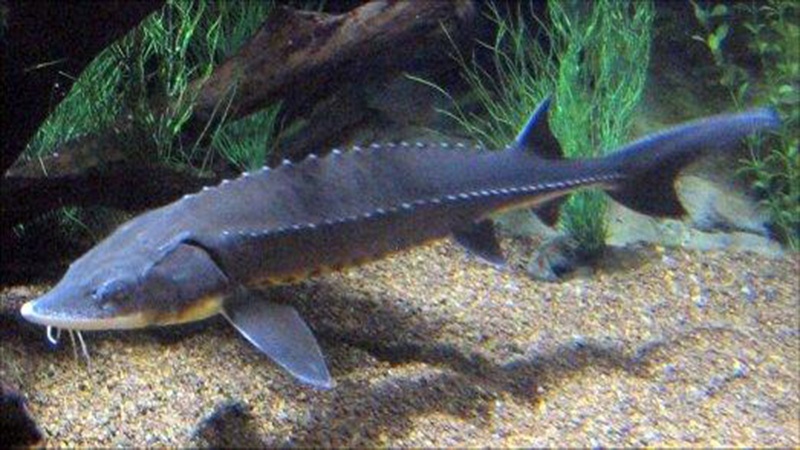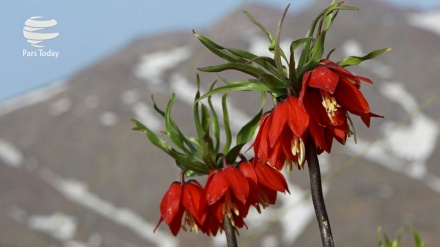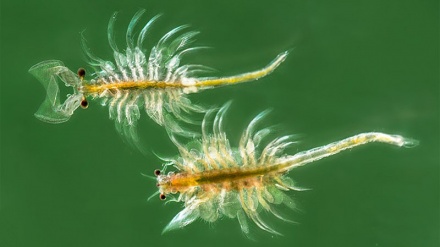Iran’s rare animal and plant species (19)
Welcome to this week’s episode of the series Iran’s Rare Animal Species. Today, we introduce different types of Caspian Sea sturgeons.
Based on the existing data; the majority of vertebrates in the world are comprised of fish species. Meanwhile, more than 20,000 different fish species have been identified in global waters; out of which roughly 160 fish species live in Iran’s seas and rivers. In a general classification, there are three main groups of fish species in Iran, which are namely Caspian Sea fish species, fish species in Iran’s internal waters, and the fish species living in the Persian Gulf and Sea of Oman. Unfortunately, due to a surge in fishing and destruction of the living environment of aquatics, some of the fish species have been pushed toward the verge of extinction; some of the most important of which are sturgeons.
Caspian Sea, which is situated in northern Iran, neighbors Iran from the south; Russia from the north; Russia and Azerbaijan Republic from the west; and Turkmenistan and Kazakhstan Republics from the east. The Caspian Sea is the habitat of the most valuable fish species in the world. This is especially the case in southern Caspian Sea, and rivers which pour into the Caspian Sea, across Iran’s coastal belt. There are 78 fish species in the Caspian Sea, including sturgeons, which are among the most valuable fish species, worldwide. However, as the result of several problems, such as excessive fishing, sturgeons have been pushed to the verge of extinction.
Sturgeons are unique fish species; which date back to hundreds of millions of years ago, originating from the Jurassic Age. Thus, sturgeons are also referred to as living fossils. There are 27 different sturgeon species; five of which live in Caspian Sea waters. The value of these fish species is because of their eggs, which are known as caviar, or black pearls. The Caspian Sea is the habitat of 93% of the sturgeon species across the globe.
Huso huso is the biggest fish of the Caspian Sea, which is on the verge of extinction. It produces the world’s most expensive caviar. This fish could weigh 1400 kilograms, and live up to a hundred years. It hatches eggs once every two or three years, and reaches puberty between the ages of 14 to 17. Its length can stretch to more than four meters.
Meanwhile, one of the main sturgeon species in southern waters of the Caspian Sea is Acipenser Persicus, which mainly hatches its eggs in the spring season. The average volume of the caviar which this type of sturgeon produces increases with age, and changes in different seasons of the year. Its caviar maintain further diversity in color, in comparison to other species of sturgeon, varying from dark gray to bright gray, and golden color, in some rare cases. Its caviar is one of the most popular types of caviar in the world.
Another type of sturgeon which lives in the Caspian Sea is Acipenser Gueldenstaedtii. In the northern waters of Caspian Sea, this type of sturgeon lives in depths of two to five meters. However, this type of sturgeon lives in depths of two meters to hundred-thirty meters in southern waters of the Caspian Sea. This type of fish hatches its eggs in Volga River in the north; or Sefidroud River, south of the Caspian Sea. Its reproduction takes place in spring and fall seasons.
Another type of sturgeon is called Acipenser Nudiventris; which is on the verge of extinction in Russian, Azerbaijan Republic, and Turkmenistan waters; with its caviar trade being banned in these waters. However, in Iran, many measures have been taken to save this endangered fish.
The smallest type of sturgeon is Acipenser stellatus, which maintains a long jaw, and a unique appearance. Its caviar is smaller in size compared to other kinds of caviar, and is very tasty. This type of sturgeon enters rivers in the spring season in order to hatch its eggs.
After the collapse of the former Soviet Union, illegal fishing surged in the Caspian Sea, pushing a number of fish species to the verge of extinction. Today, caviar smuggling, and surging contamination of sea waters due to release of Iran’s neighboring countries’ wastewater; sturgeons have been endangered. Moreover, recent droughts, and blockade of rivers with dams have stirred a number of problems for fish species, in hatching their eggs. Meanwhile, in order to protect and safeguard aquatics, and to prevent the extinction of sturgeons in Caspian Sea, there is need for the national and regional resolve of the Caspian Sea littoral states; because these fish species highly contribute to the livelihood of regional people. Thus, protection of sturgeon species is of paramount importance.
MR/SS



